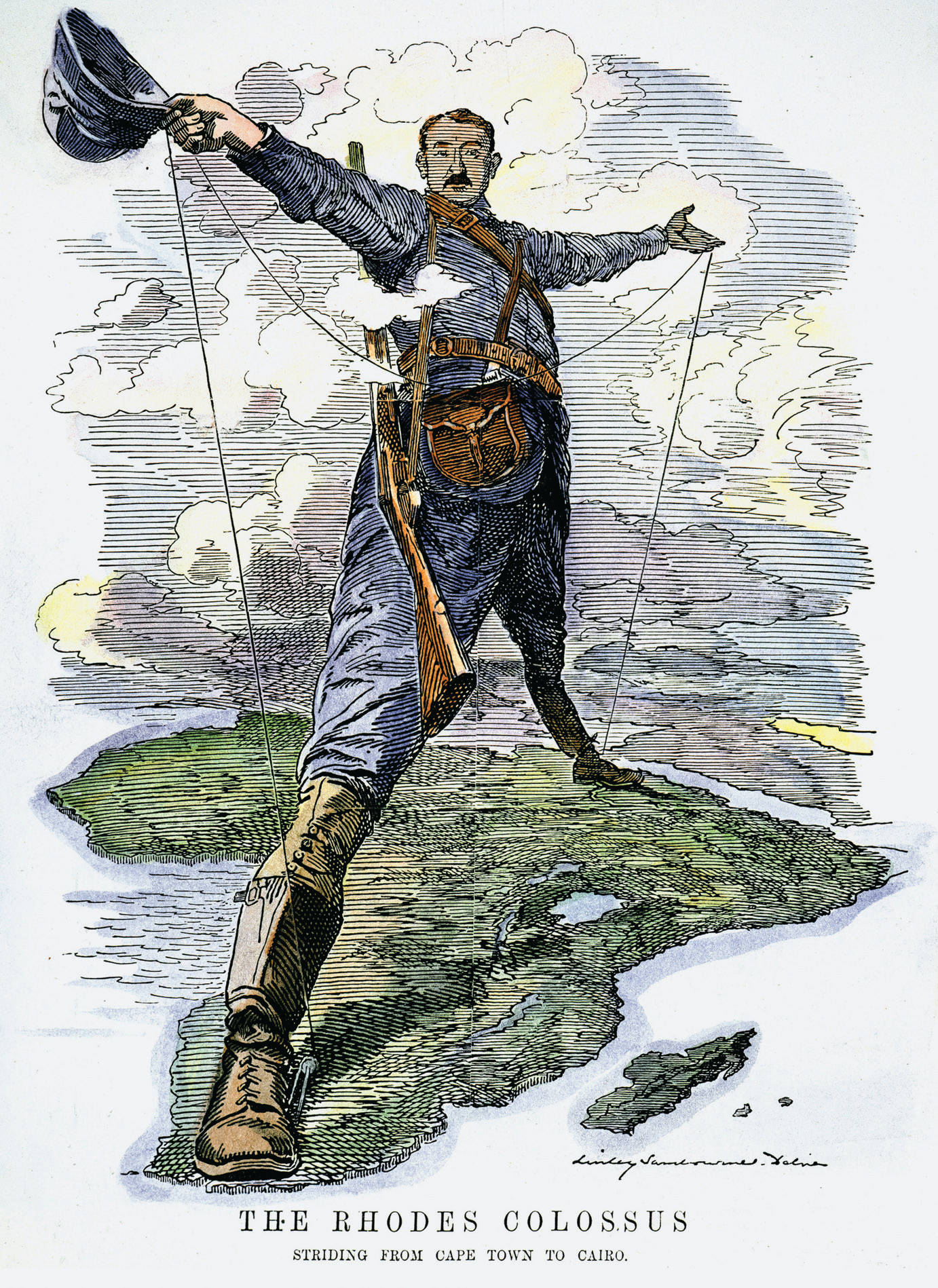Visual Source 18.3
From the Cape to Cairo
Nowhere did the vaulting ambition of European colonial powers in Africa emerge more clearly than in the British vision of a North–South corridor of British territories along the eastern side of the continent stretching from South Africa to Egypt, or in the more popular phrase of the time, “from the Cape to Cairo.” A part of this vision was an unbroken railroad line running the entire length of the African continent. That grand idea was popularized by Cecil Rhodes, a British-born businessman and politician who made a fortune in South African diamonds and became an enthusiastic advocate of British imperialism. Visual Source 18.3, an 1892 cartoon published in the popular British magazine of satire and humor named Punch, shows Rhodes bestriding the continent with one foot in Egypt and the other in South Africa.

Question
Is this famous image criticizing or celebrating Rhodes’s Cape-to-Cairo dream? Explain your reasoning.
Question
What does this visual source suggest about the purpose of the Cape-to-Cairo scheme and the means to achieve it? Notice the telegraph wire in Rhodes’s hands and the rifle on his shoulder.
Question
How did the artist portray the African continent? What does the absence of African people suggest? How does this image compare to Visual Source 18.1?
Question
Scholars have sometimes argued that the scramble for Africa was driven less by concrete economic interests than by emotional, even romantic, notions of national grandeur and personal adventure. In what ways do Visual Sources 18.2 and 18.3 support or challenge this interpretation?